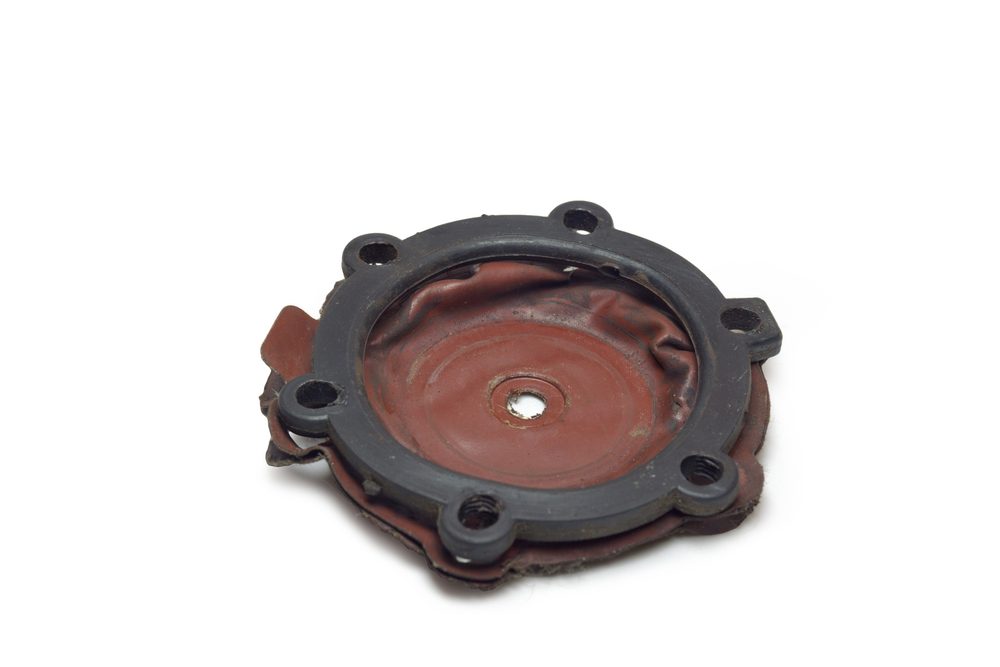
At Mid-West Instrument, our expertise lies in crafting top-tier differential pressure gauges, particularly those equipped with diaphragm-type sensors. Among the technologies we utilize is the piezo-resistive differential pressure sensor element. This advanced sensor translates physical pressure fluctuations into electrical signals, offering unparalleled precision and dependability. Although piezo-resistive sensors represent one choice, we also provide alternative options like capacitive and magnetic angle sensors, each excelling under specific conditions. Below, we will delve into the function of piezo-resistive differential pressure sensor elements, their operation within our diaphragm-type gauges, and their value across diverse industrial sectors.
Understanding the Piezo-Resistive Differential Pressure Sensor Element
A piezo-resistive differential pressure sensor element is a semiconductor material that modifies its electrical resistance upon exposure to mechanical stress or pressure. In our diaphragm-type differential pressure gauges, the piezo-resistive sensor is affixed to a flexible diaphragm. When pressure is exerted on one side of the diaphragm, it bends, prompting the piezo-resistive material to alter its resistance. This shift is then transformed into an electrical signal, which is used to assess the pressure differential between two points in a system.
Renowned for their sensitivity and accuracy, even at minimal pressure levels, these sensors are perfect for scenarios requiring exact differential pressure readings, such as in process control and environmental monitoring.
Operation of Piezo-Resistive Sensors in Diaphragm-Type Gauges
In diaphragm-type gauges, the piezo-resistive sensor element is combined with the diaphragm, which divides the high-pressure and low-pressure zones of the system. When a pressure difference is applied across the diaphragm, the diaphragm bends, and the piezo-resistive material undergoes mechanical strain. This strain results in a change in the electrical resistance of the material.
This resistance variation is directly proportional to the pressure difference across the diaphragm. The gauge's electronics convert this resistance alteration into a readable electrical signal, enabling us to display or send the differential pressure measurement. The heightened sensitivity of piezo-resistive sensors guarantees that even minor pressure changes are precisely captured and reported, making them highly effective in dynamic settings where pressures fluctuate swiftly.
Advantages of Piezo-Resistive Sensors in Diaphragm-Type Gauges
Employing piezo-resistive differential pressure sensor elements in our diaphragm-type gauges provides numerous key benefits. One standout advantage is their exceptional sensitivity. These sensors can identify even the slightest pressure variations, making them ideal for applications where precision is paramount, such as in flow rate tracking, filter status monitoring, and liquid level measurement in tanks.
Another significant benefit of piezo-resistive sensors is their long-term stability. These sensors are incredibly dependable, preserving accuracy over time, even in harsh or unstable environments. This makes them suitable for demanding conditions, such as those encountered in industries like oil and gas, chemical processing, and power generation.
Piezo-resistive sensors are also energy-efficient and compact. Their diminutive size enables us to design compact differential pressure gauges without sacrificing performance. Furthermore, their low power consumption makes them ideal for applications where energy efficiency is crucial.
Lastly, piezo-resistive sensors are cost-effective. They deliver high performance at a relatively low cost, making them an economical solution for customers seeking accurate and reliable differential pressure measurements without exceeding their budget.
Applications of Piezo-Resistive Differential Pressure Sensors
Piezo-resistive differential pressure sensor elements find application in a broad spectrum of industries and uses. In filtration systems, they monitor pressure drops across filters, supplying real-time data to operators so they can decide when filters require replacement or cleaning. For flow measurement tasks, piezo-resistive sensors quantify the pressure difference across a flow restriction, facilitating the precise calculation of flow rates.
In HVAC systems, piezo-resistive sensors assist in monitoring air circulation and detecting obstructions in ductwork, ensuring optimal system functionality. Additionally, in liquid level measurement, these sensors compute the pressure difference between the top and bottom of a tank, offering an accurate reading of the liquid level.
Conclusion
Piezo-resistive differential pressure sensor elements are vital to the effectiveness of our diaphragm-type gauges. They deliver high sensitivity, long-term reliability, and cost-efficiency, making them perfect for a wide array of industrial applications where precise differential pressure readings are indispensable. By integrating piezo-resistive sensors into our gauges, Mid-West Instrument assures our clients of receiving precise, dependable, and resilient solutions tailored to their industrial requirements.
For more than six decades, Mid-West Instrument has been a premier supplier of premium differential pressure gauges. Seeking assistance in selecting the ideal pressure gauge and equipment for your business? Contact us today to speak with one of our knowledgeable professionals.
Ventilator For Coal Mine,Ventilation Fans For Mine,Mine Ground Use Explosion Proof Axial Fan,Wind Direction Adjustment Damper
Yuncheng Anhong Enery-saving Explosion-proof Fan Co.,Ltd. , https://www.anhongfengji.com
